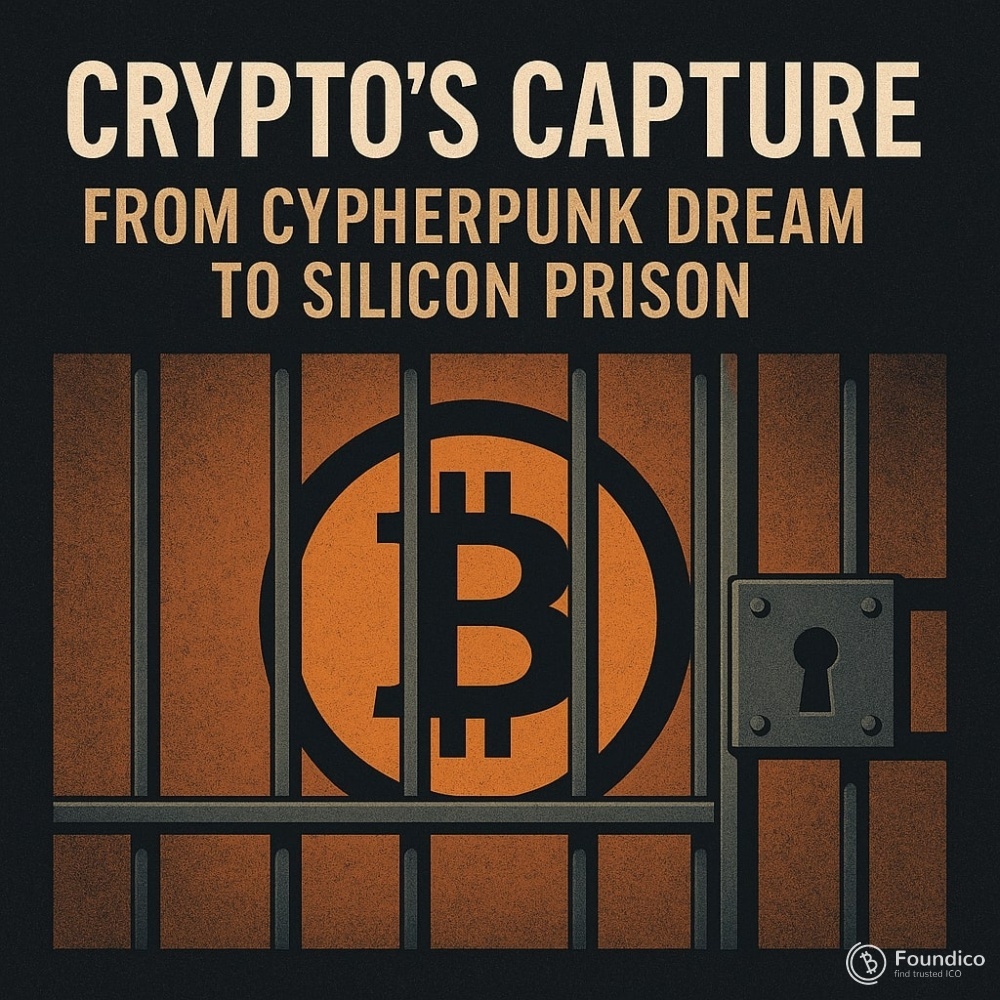Crypto’s Capture: From Cypherpunk Dream to Silicon Prison

By Dr. Pooyan Ghamari, Swiss Economist and Visionary
The birth of cryptocurrency was a dream forged in the fires of rebellion. It emerged from the cypherpunk ethos of the 1990s: a movement dedicated to privacy, autonomy, and freedom from corporate and state control. Bitcoin, the first great manifestation of that dream, was envisioned as a digital weapon against financial oppression — a way for individuals to reclaim sovereignty over money.
But history has a cruel way of repeating itself. What began as a radical experiment in self-liberation has, in many ways, been captured, tamed, and repackaged by the very forces it sought to escape. Crypto today often resembles a silicon prison — sleek, efficient, and innovative, yet still an enclosure controlled by a few powerful gatekeepers.
The Cypherpunk Dream
The cypherpunks were not idealists for profit; they were warriors for freedom. Their dream was simple yet profound:
-
Money without masters — financial systems immune to censorship and surveillance.
-
Privacy as a right — code as armor against intrusion.
-
Decentralized trust — no reliance on institutions, only cryptographic proof.
Bitcoin’s whitepaper captured this spirit, a radical declaration that individuals could transact globally without permission, overseen only by mathematics. For a brief moment, the dream felt alive.
The Road to Capture
Yet, as crypto scaled, its landscape shifted:
-
Corporate Entry – Once hostile, Wall Street now embraces crypto, not to free it, but to domesticate it. Exchanges have become compliant custodians, mirroring the banks Bitcoin was meant to replace.
-
Regulatory Chains – Governments, threatened by uncontrolled value flows, have imposed KYC, surveillance, and taxation regimes that tether crypto back to the old financial order.
-
Silicon Empires – Tech giants and venture capitalists have flooded the space, funding projects not for decentralization but for profit, creating ecosystems where users once again rely on centralized infrastructure.
In chasing legitimacy, much of crypto has traded its radical edge for convenience, liquidity, and approval. The dream of self-sovereignty has been fenced into a digital enclosure, guarded by lawyers, regulators, and corporate platforms.
The Silicon Prison
The modern crypto environment is a paradox:
-
We have endless innovation, yet diminishing autonomy.
-
We have billions in circulation, yet shrinking privacy.
-
We have thriving ecosystems, yet most of them are controlled by exchanges, custodians, and corporate developers.
This is the Silicon Prison — a world where blockchain is no longer a tool of resistance but a product on the shelf, managed and monitored by the same forces that once resisted it.
Escaping the Prison
To restore the cypherpunk dream, we must reimagine crypto’s purpose:
-
Decentralize Infrastructure – Prioritize peer-to-peer systems over centralized exchanges.
-
Reclaim Privacy – Strengthen zero-knowledge proofs, mixers, and privacy-preserving technologies.
-
Resist Capture – Support community-driven projects that reject corporate dominance.
-
Educate the Masses – Remind new adopters that crypto was never just about price charts, but about freedom.
Crypto’s journey from cypherpunk rebellion to Silicon Prison is a cautionary tale. Without vigilance, every revolution risks being absorbed by the powers it once fought. But the story is not over. The dream is not dead — it is waiting to be rekindled.
The future of crypto will depend on whether we accept our confinement in this silicon cage, or whether we dare to break free and reclaim the radical vision that started it all. The choice, as always, rests with the people.

 Pepenode - Pepenode is a utility meme coin token designed to power the Pepenode ecosystem, a gamified virtual mining platform for meme coins
Pepenode - Pepenode is a utility meme coin token designed to power the Pepenode ecosystem, a gamified virtual mining platform for meme coins